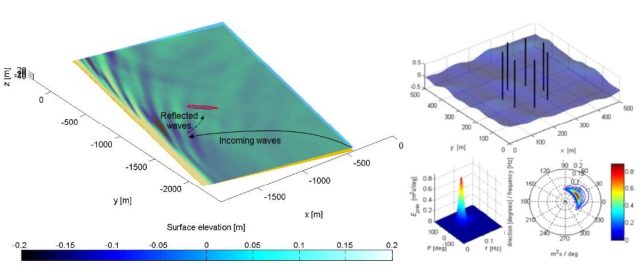Joint Industry Project HAWAIII - sHAllow WAter InItIative
The JIP HawaIII, as an acronym for “sHAllow Water InItIative”, are a series of research projects with several international partners on the mooring of LNG vessels in intermediate water depths (15m – 40 m) in the nearshore area. LNG vessels are often moored in the nearshore coastal zone, outside of a main port area.

This is partly for safety reasons. At such locations the wave conditions differ from deep water conditions. For mooring terminals in intermediate water depths, shallow-water wave specifics are important, but these effects are often not easy to include in terminal design and numerical tools available may not cover all relevant aspects. JIP HAWAIII aims to improve the estimate of downtime of nearshore terminals, allowing for better and safer design in coastal regions.
Key topic of this joint research project is infragravity waves (low-frequency waves), which are generated in shallow water by interactions between different wave components and the nearby coast. This leads to wave energy at wave periods of around 1 minute. Moored vessels (mass-spring systems) are specifically sensitive to wave energy at those periods. This can result in resonant behaviour of moored vessels, with excessive motions and/or forces in mooring lines.
The projects focused on acquiring knowledge on shallow-water wave processes including low-frequency waves / infragravity waves, developing a full design methodology (together with MARIN and other project partners) for assessing the local wave conditions for mooring of LNG vessels in shallow water, and lastly performing scale model tests, where water surface elevations and forces on a moored ship are measured, analyzed and compared to numerical results. The results of these tests are then used to identify the accuracy of the applied numerical models and validate the developed methodology. This methodology can then be used in practice to improve the estimate of downtime of nearshore terminals, allowing for better and safer design in coastal regions.




